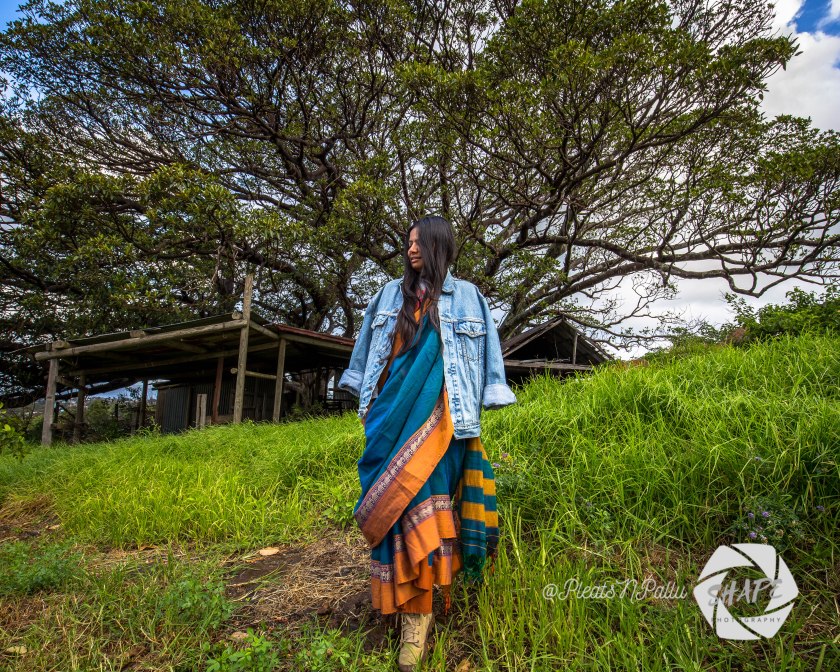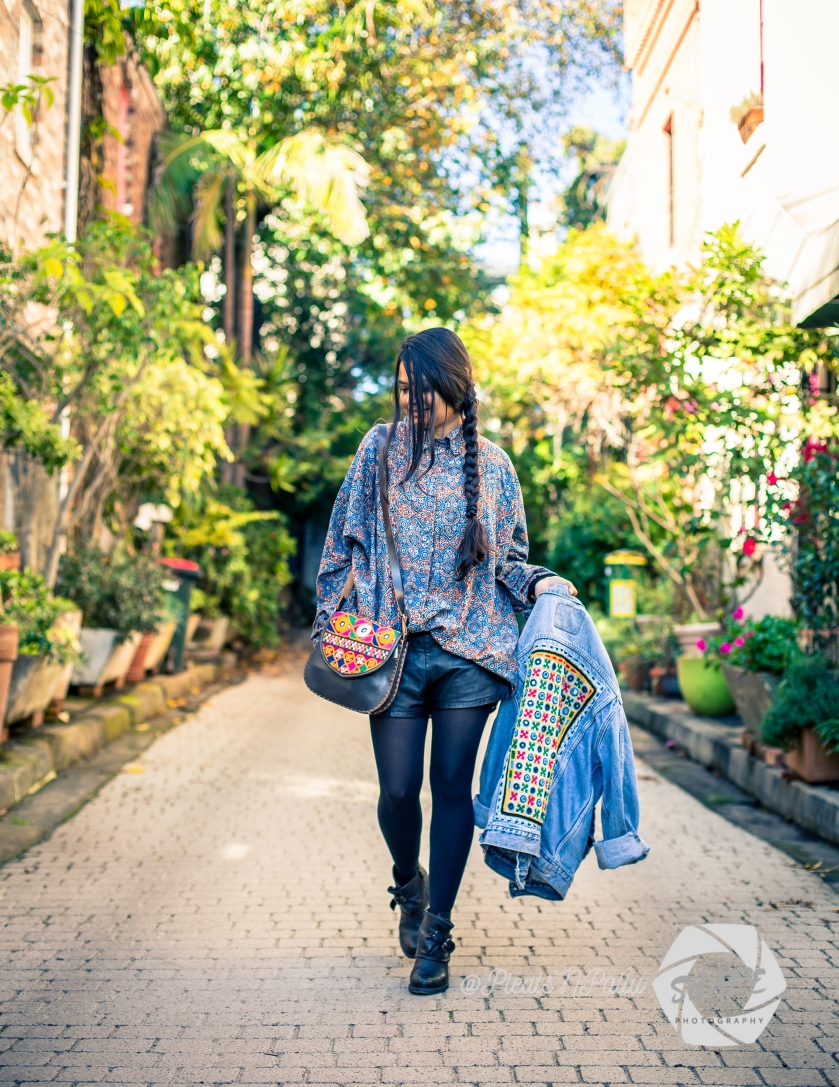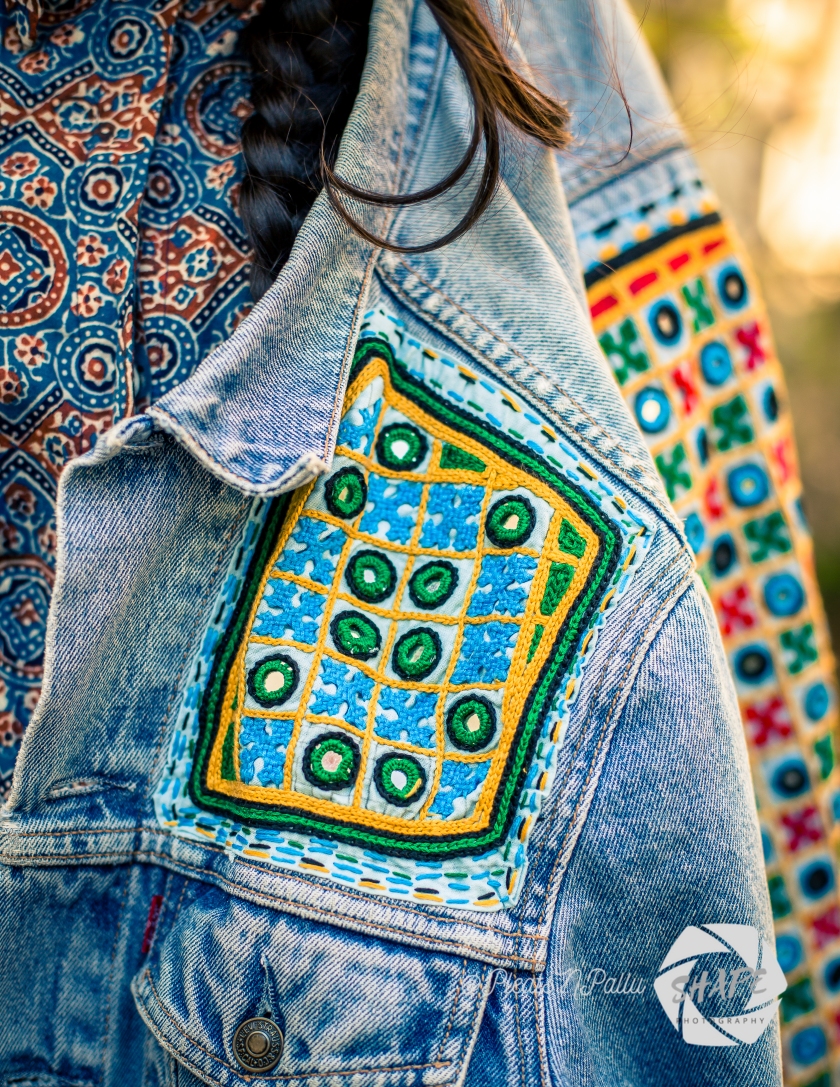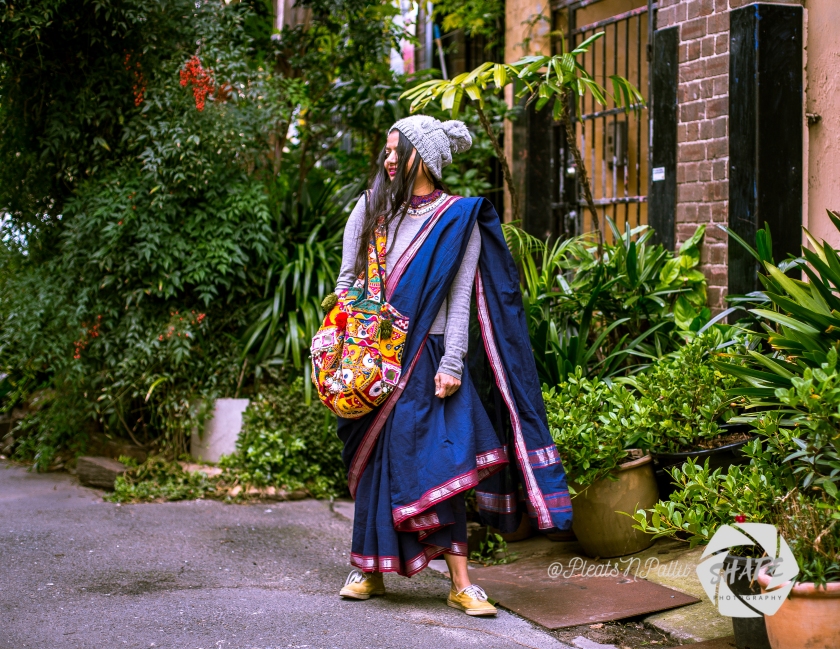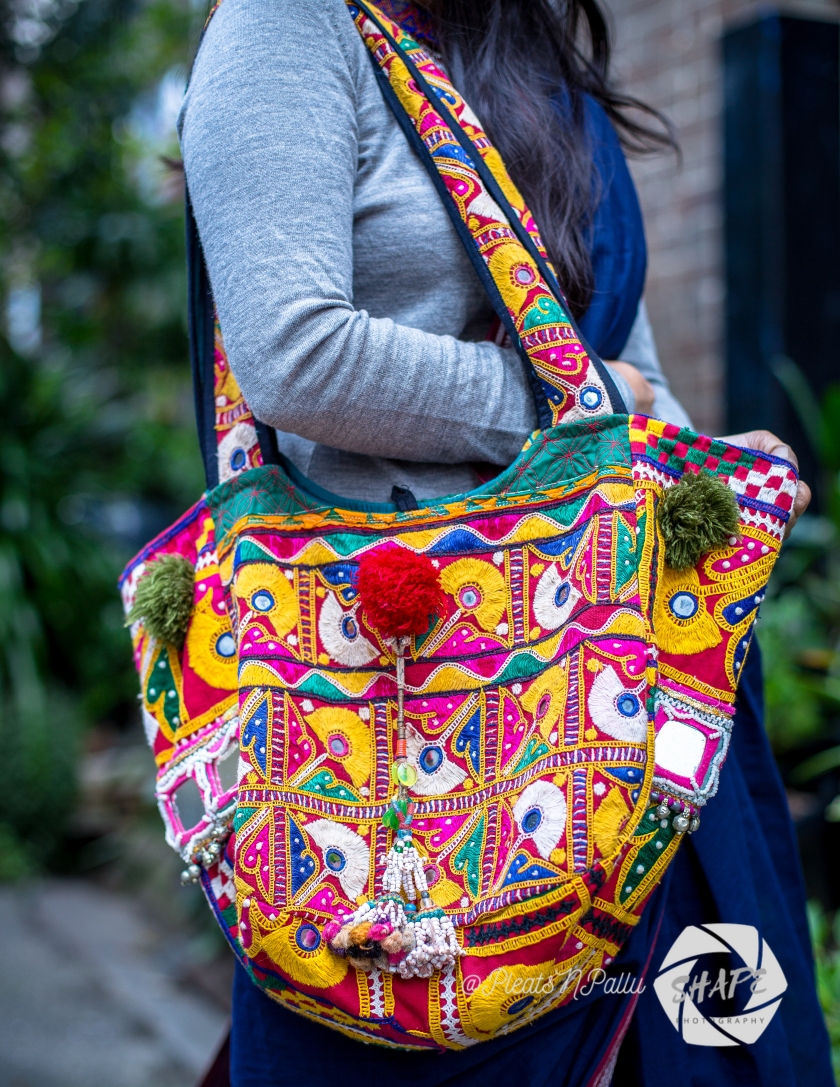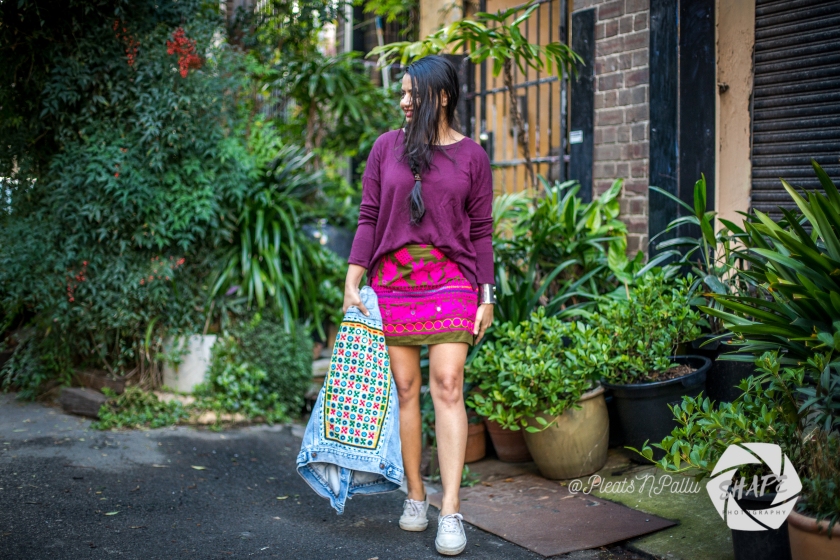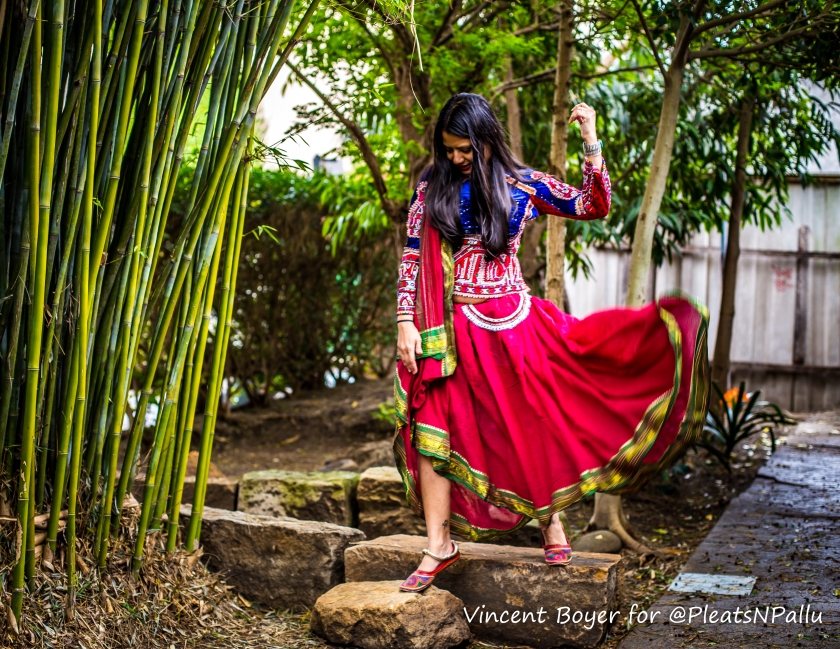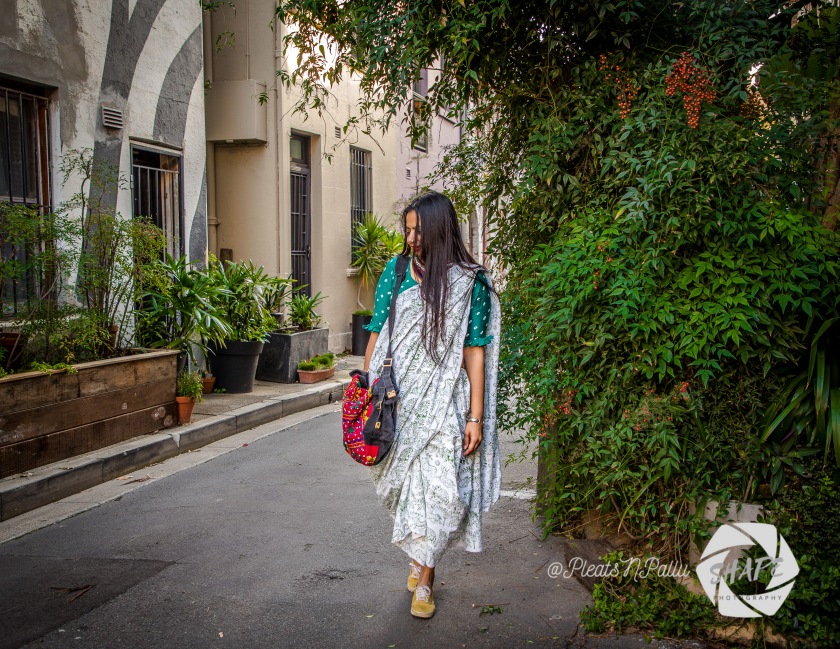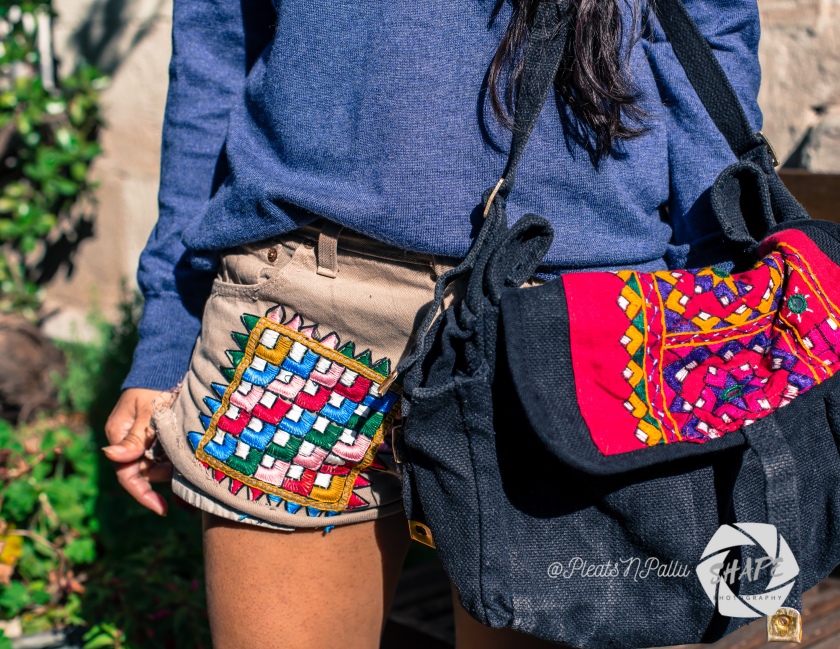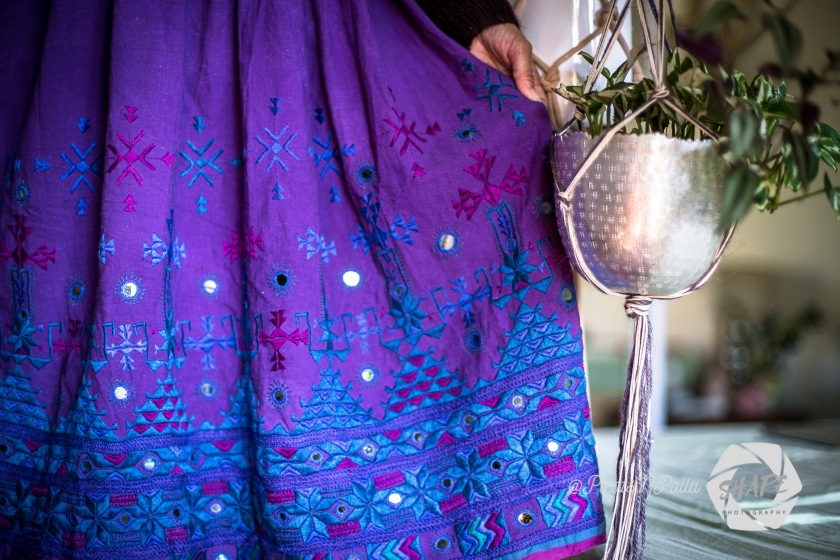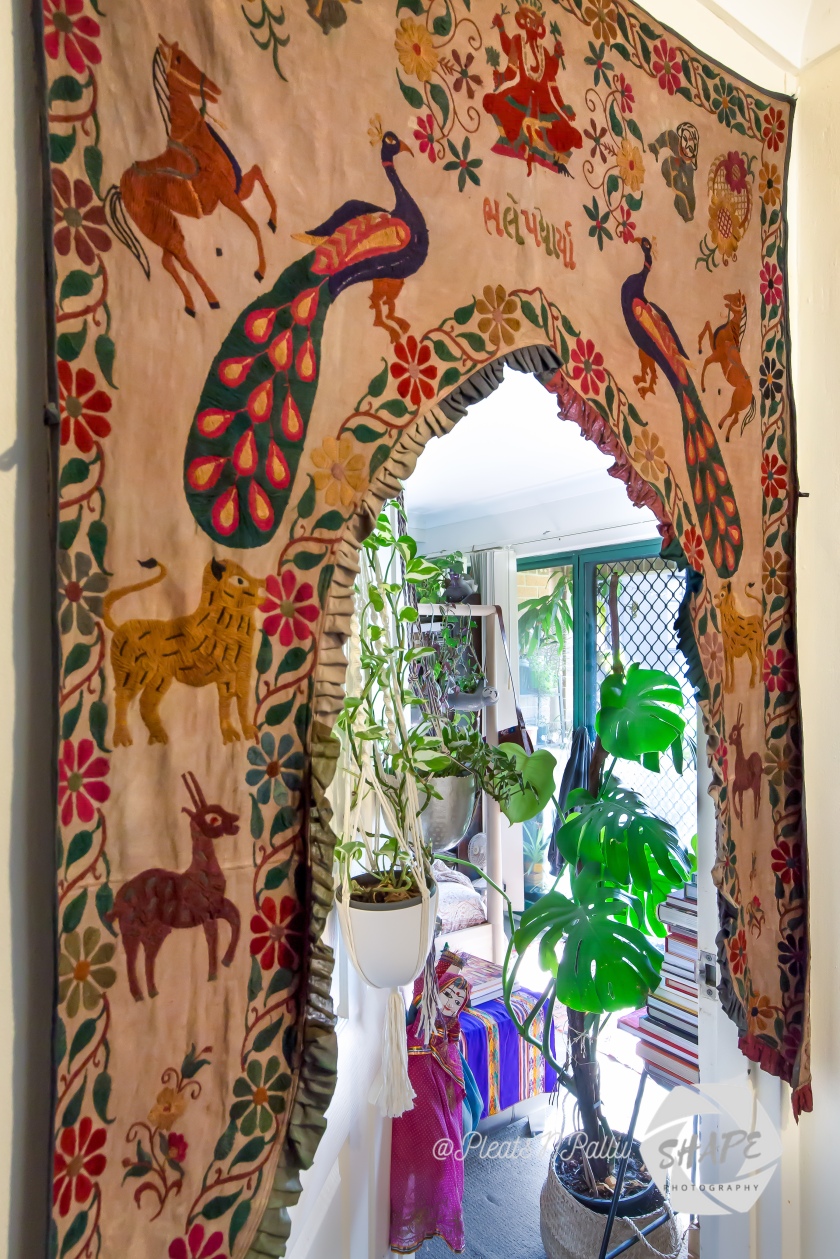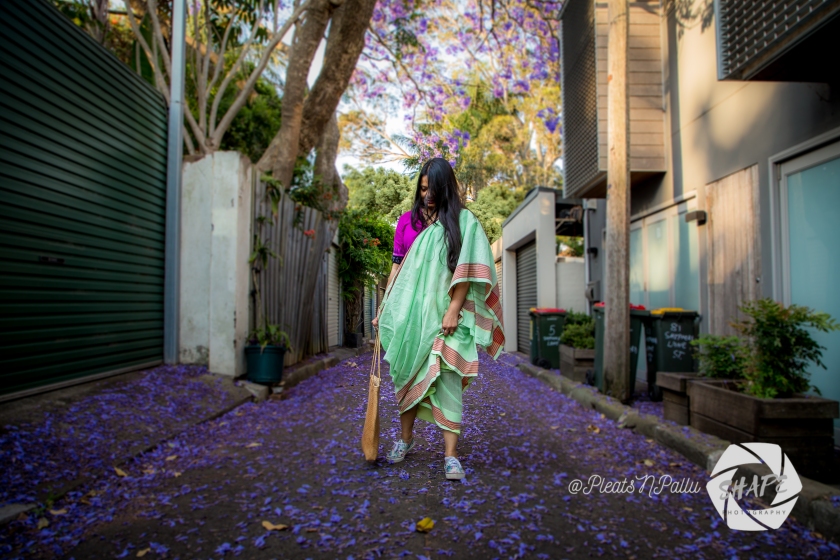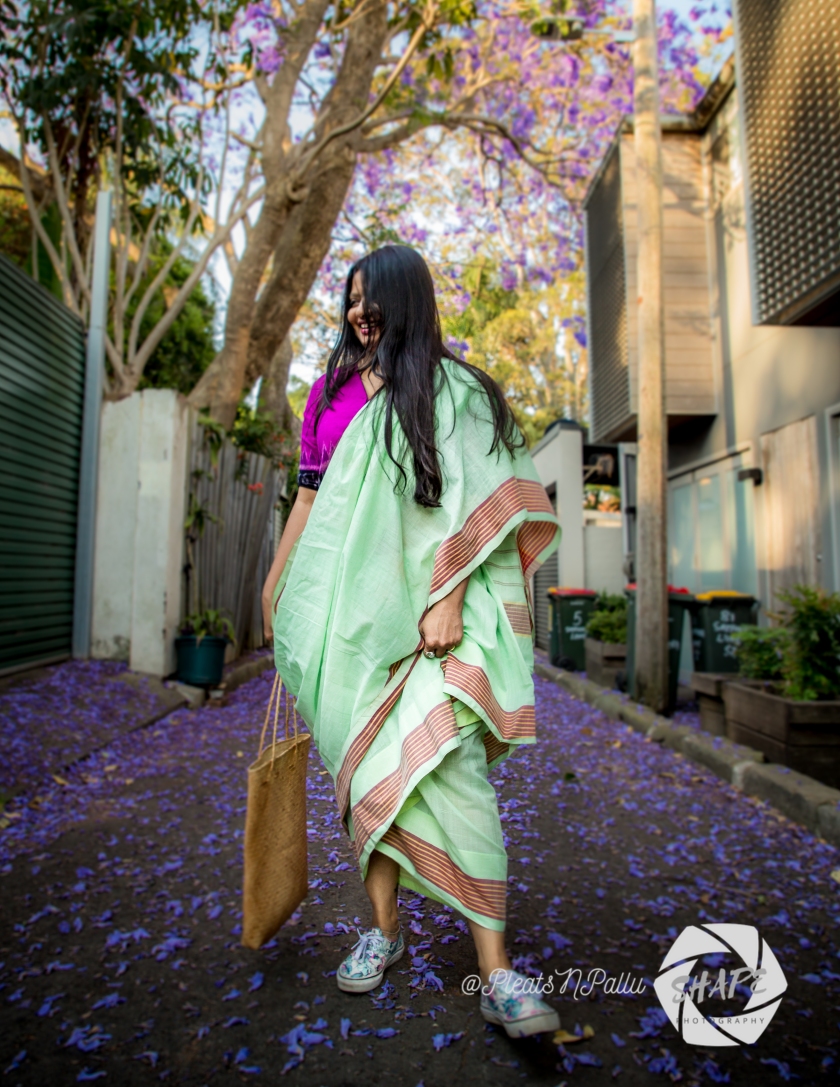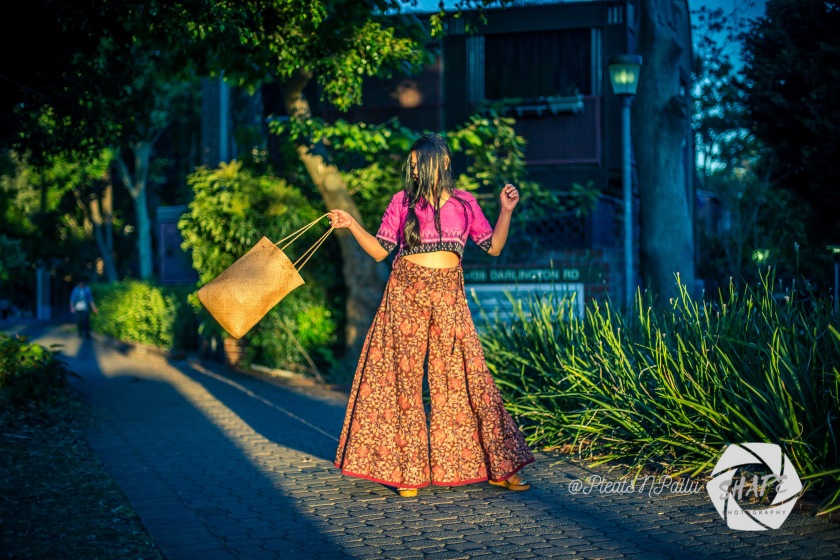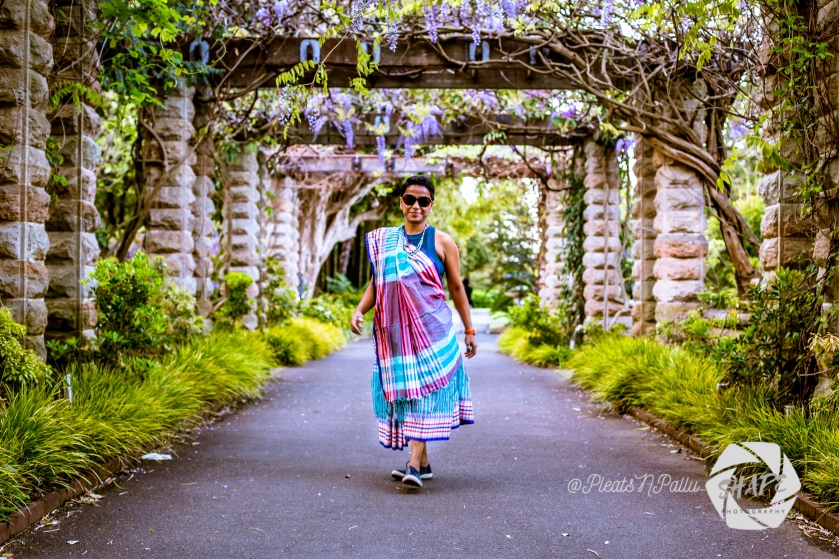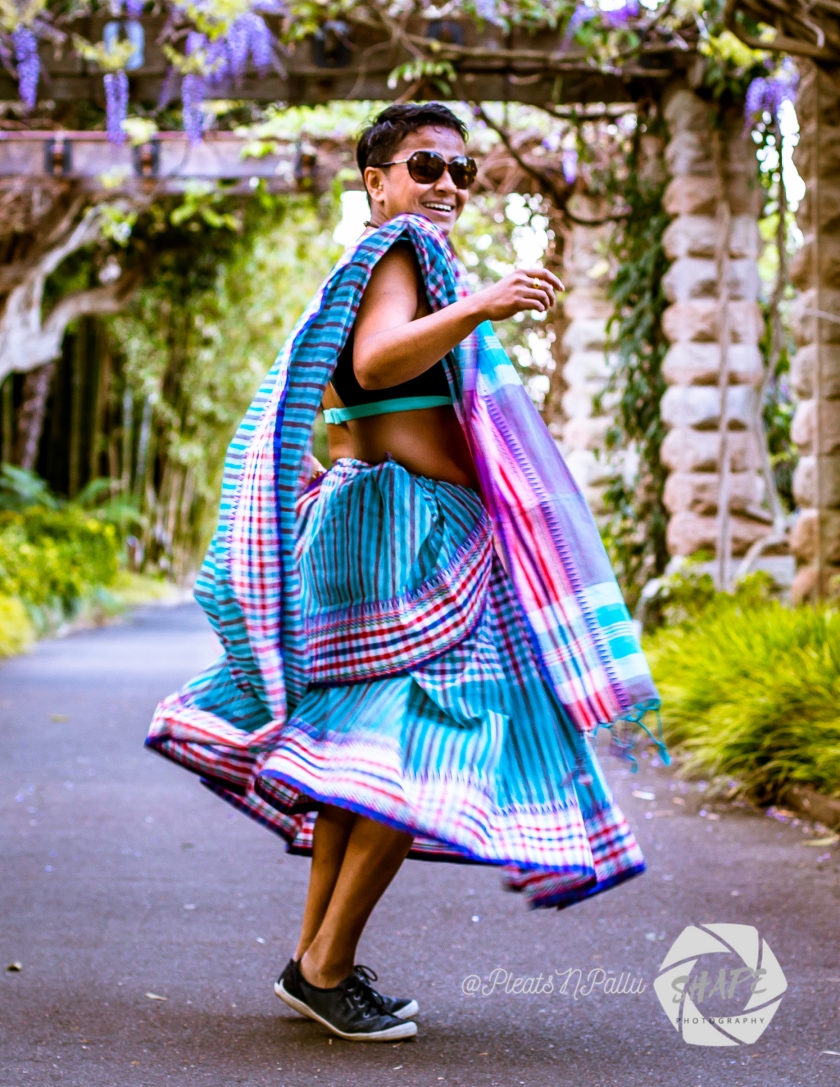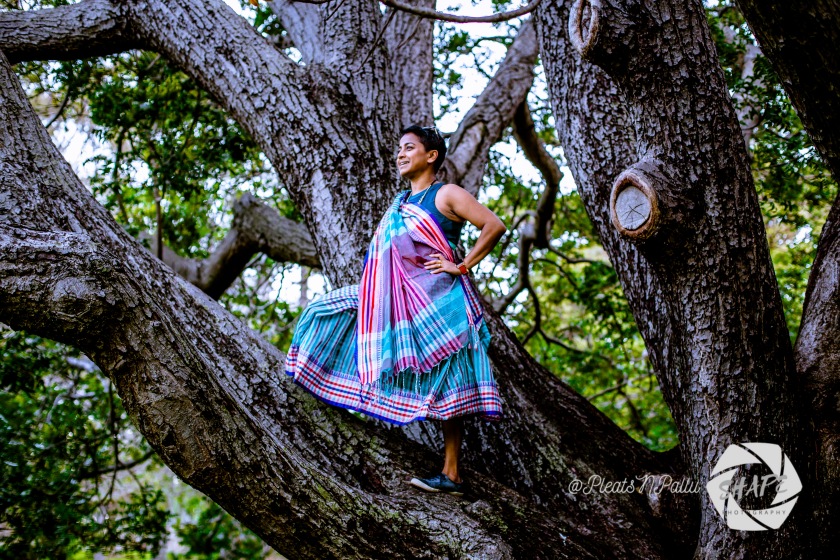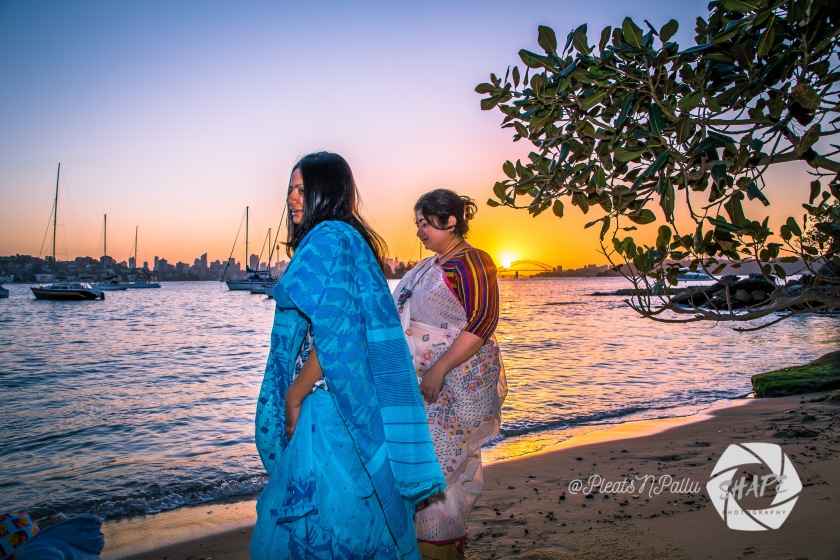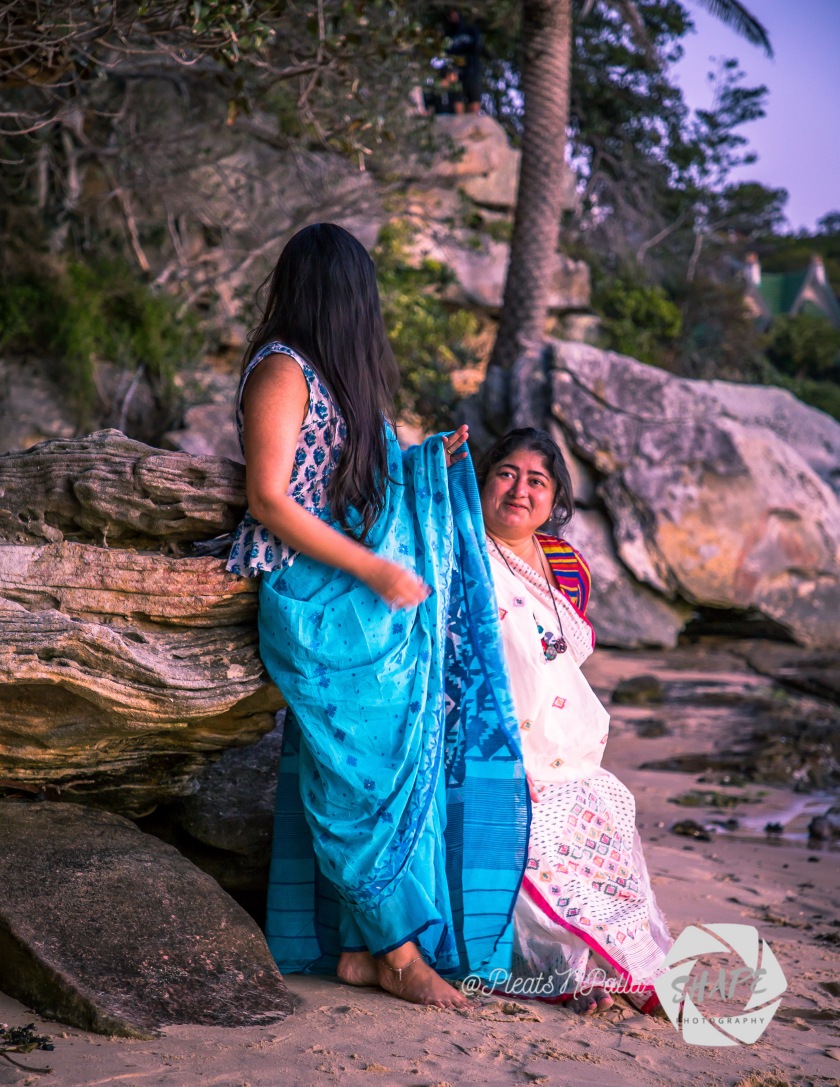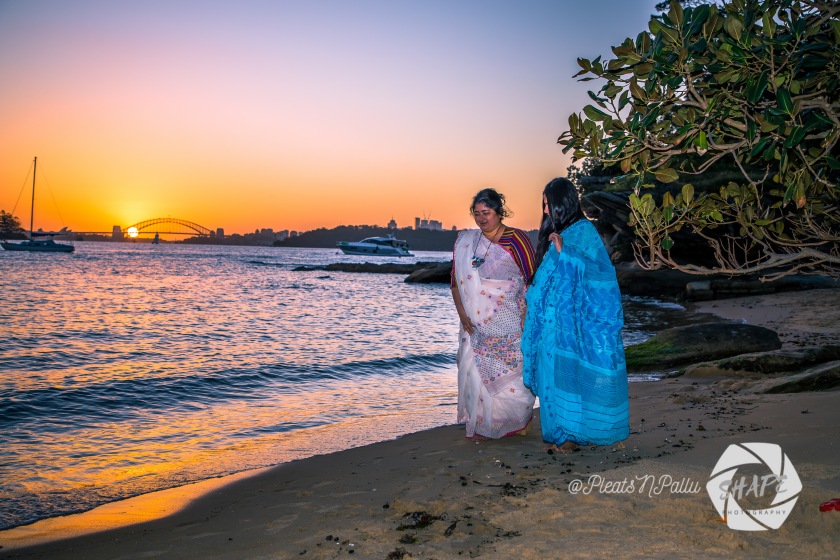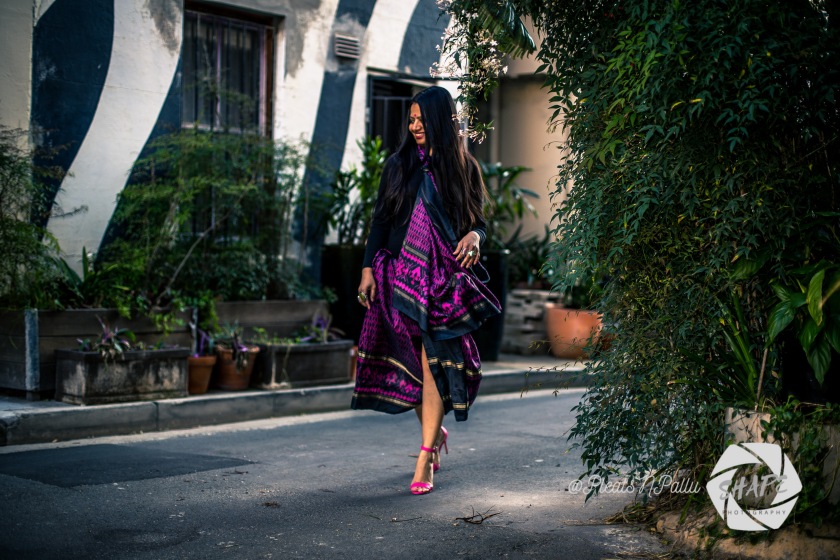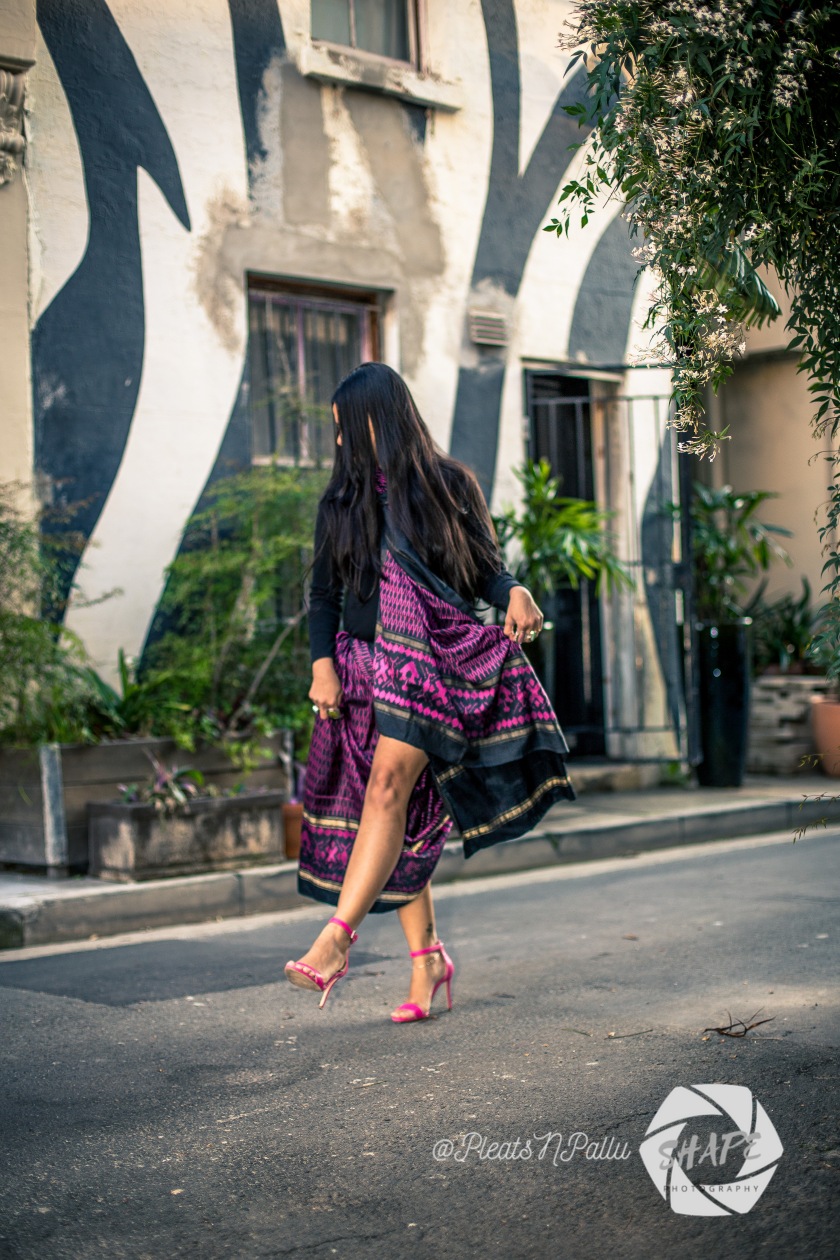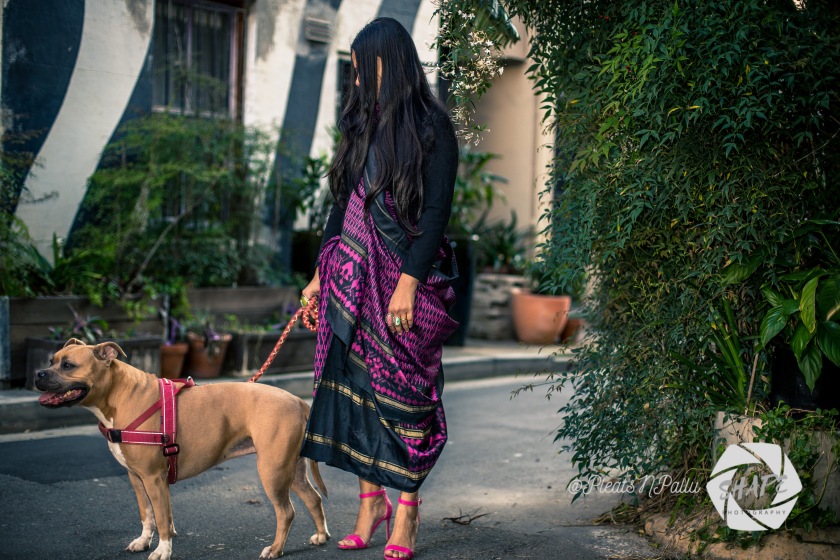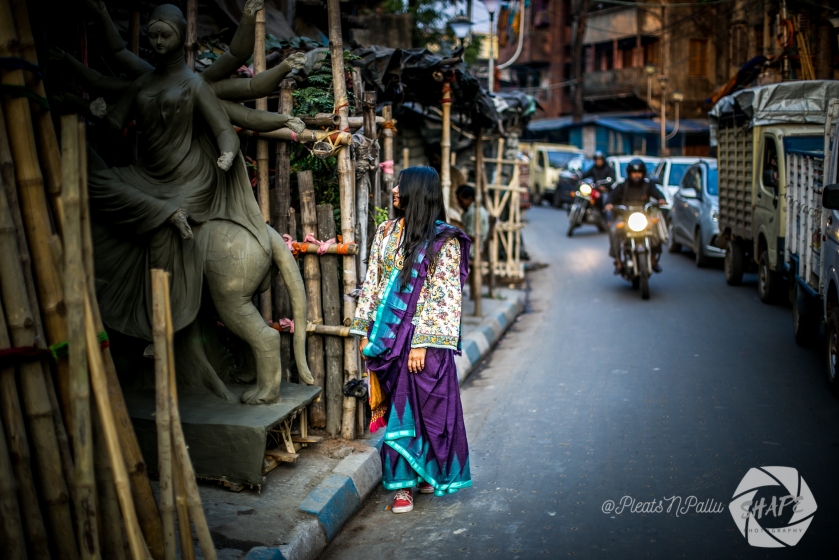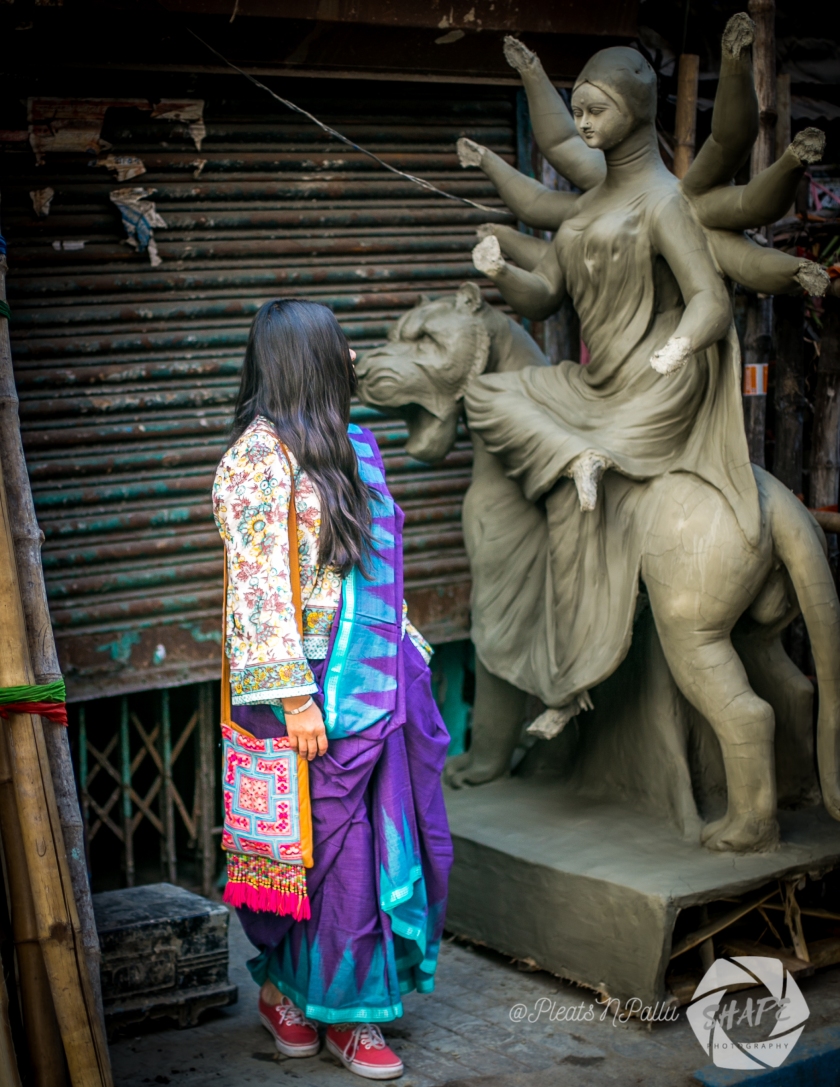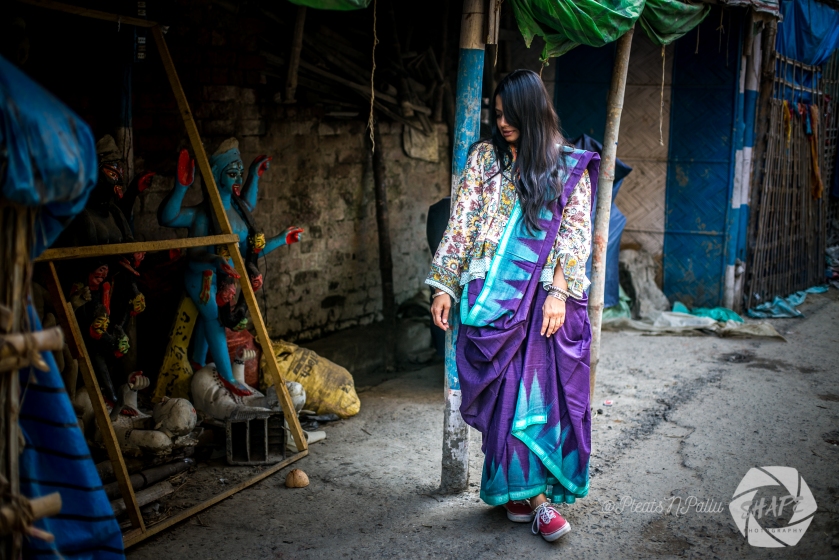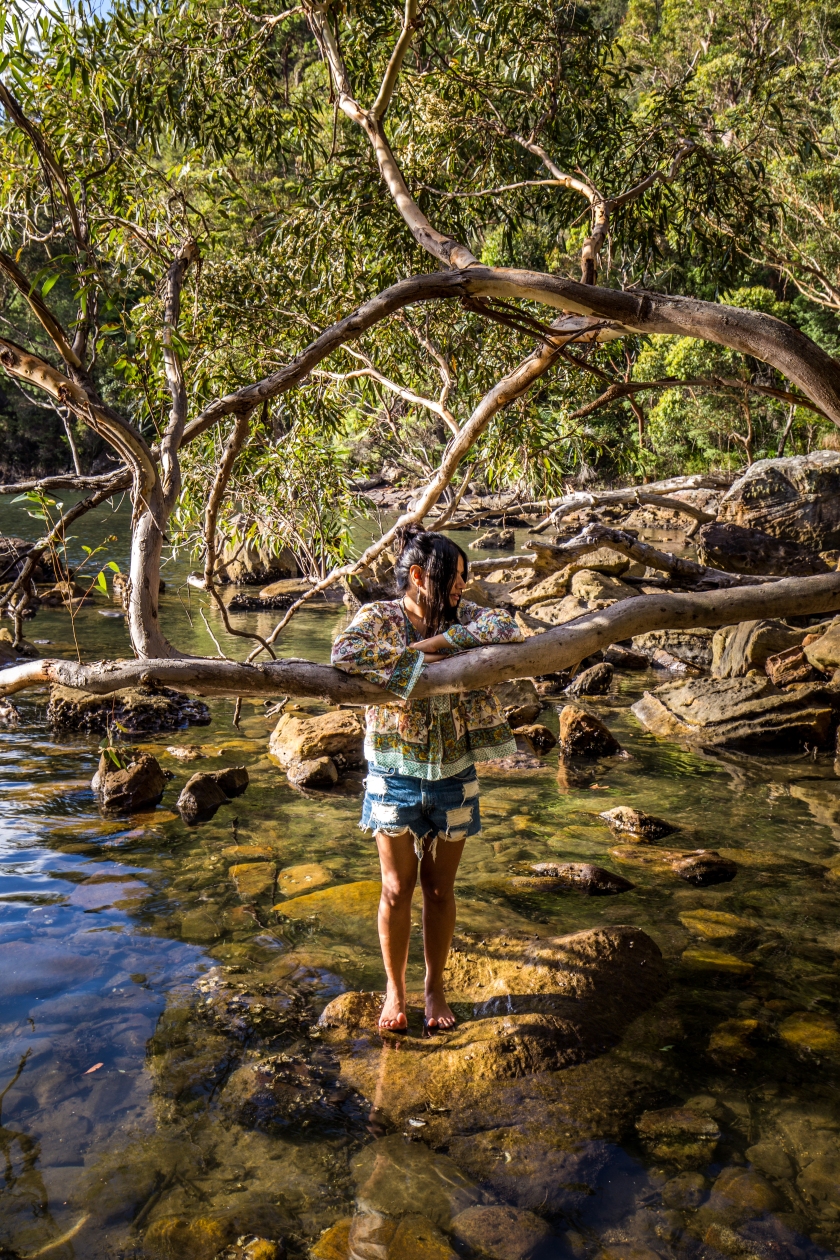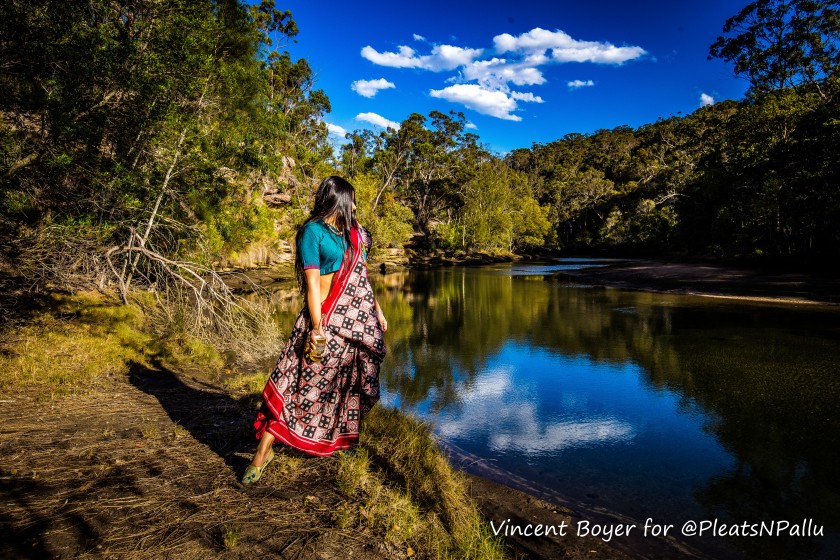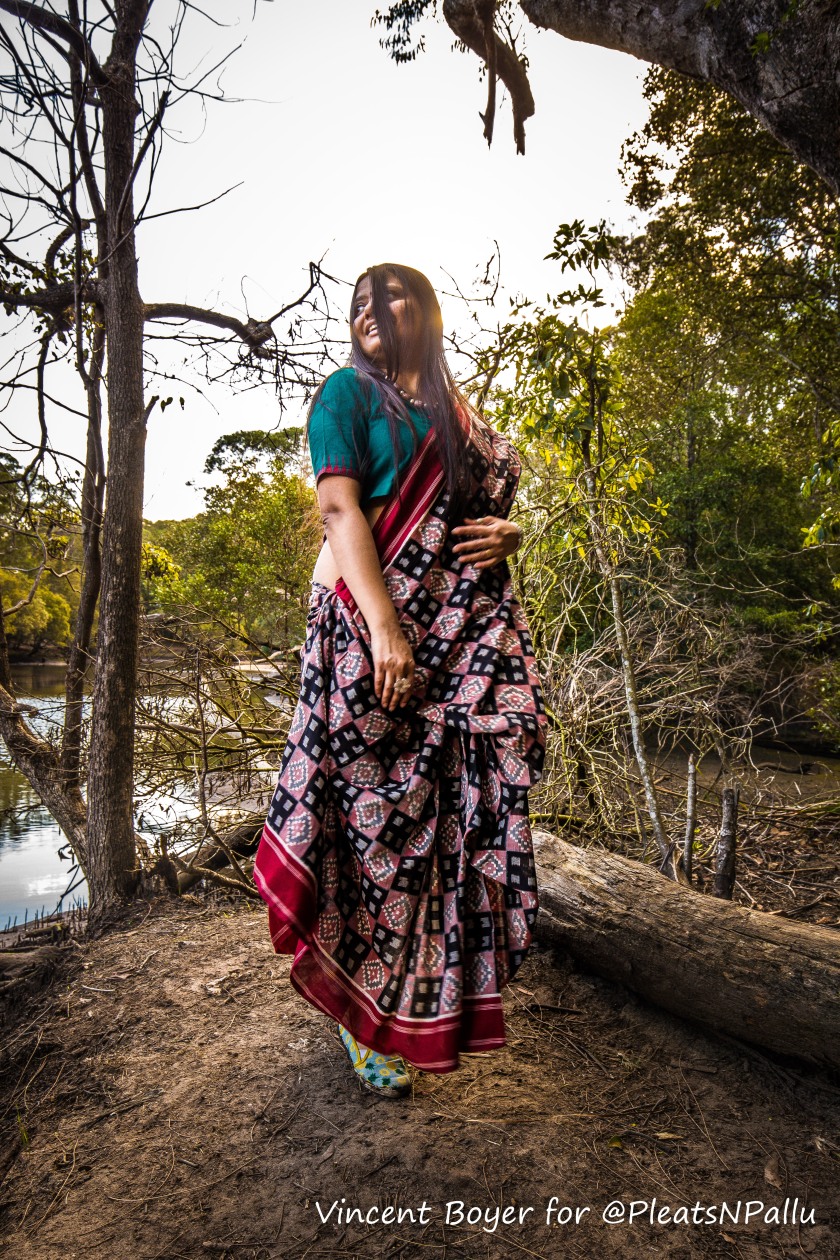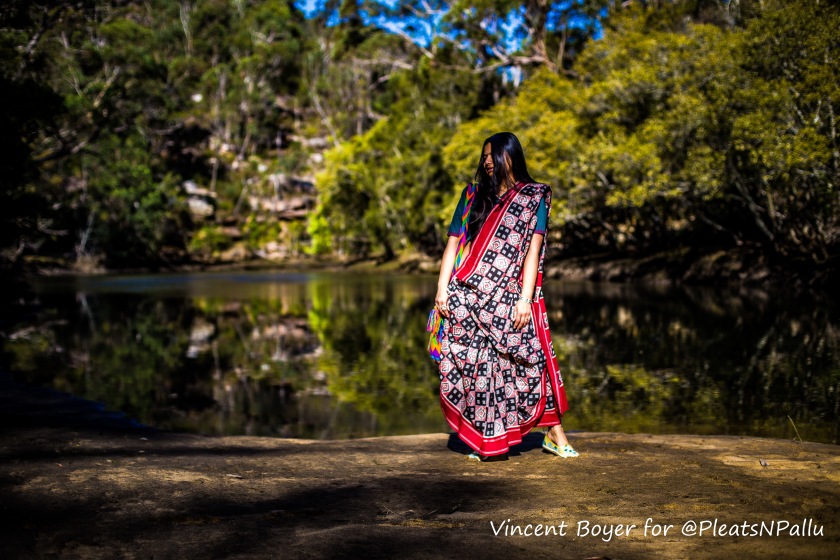Ahir bharat (embroidery ) is a style of needlework practiced by the women of the Ahir community that is characterised by ornate geometric patterns (mostly circular) following one another in elaborate rhythmic rows, accentuated with a plethora of abhla (mirrors).
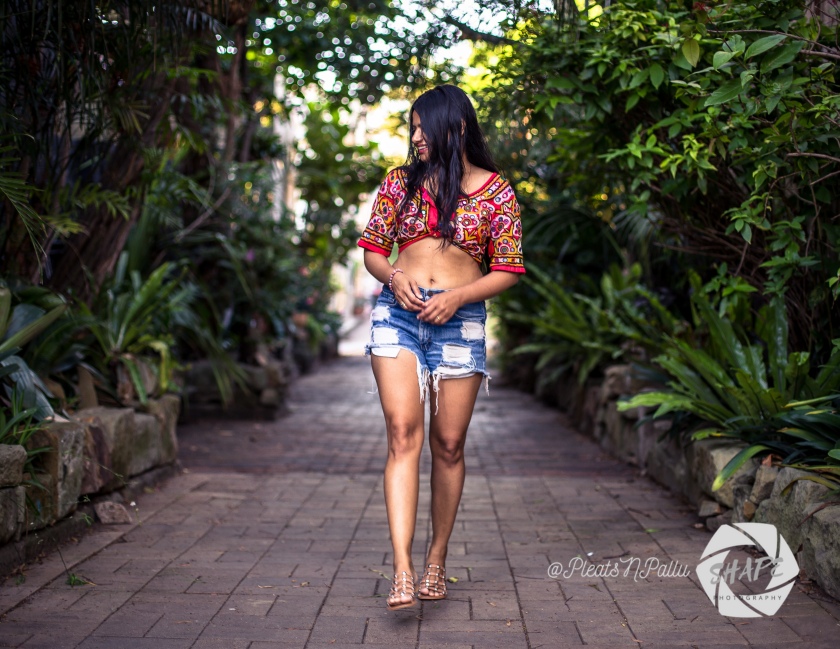
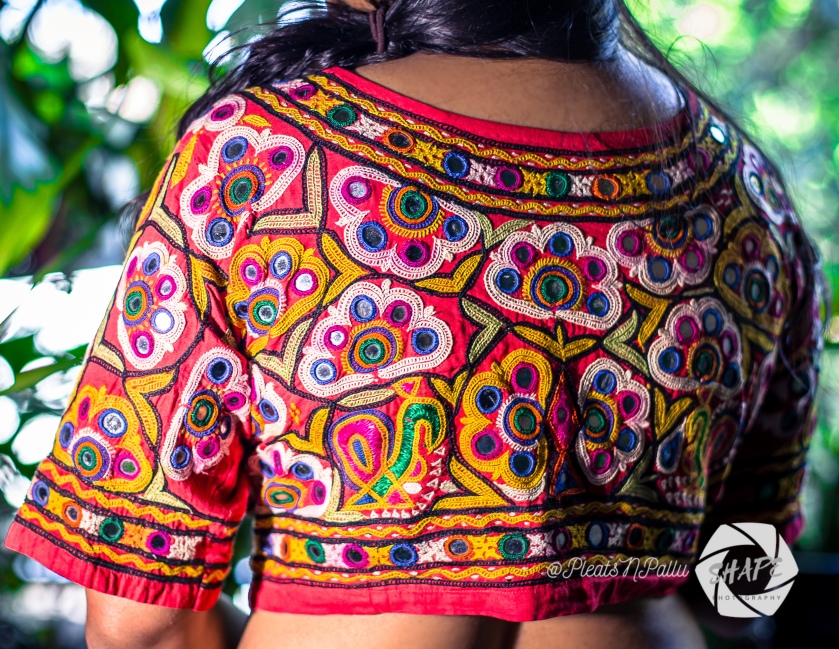
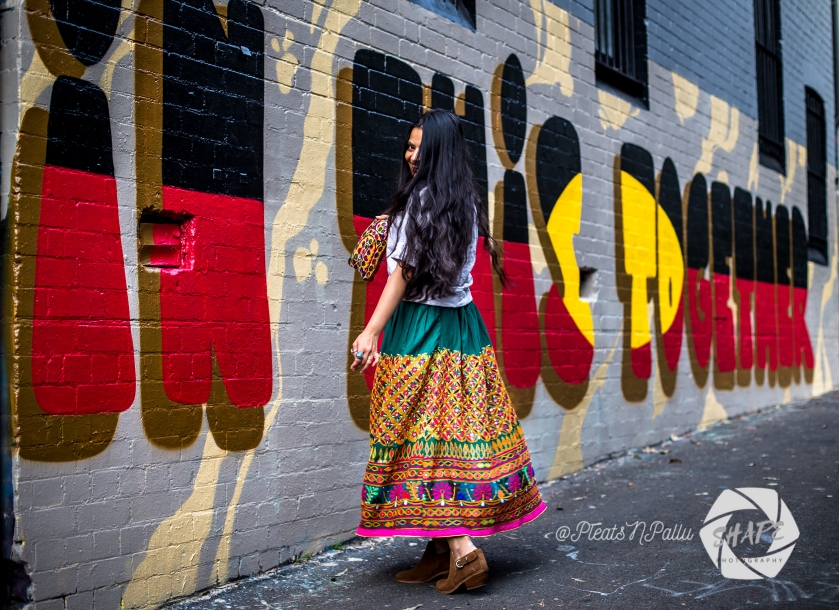
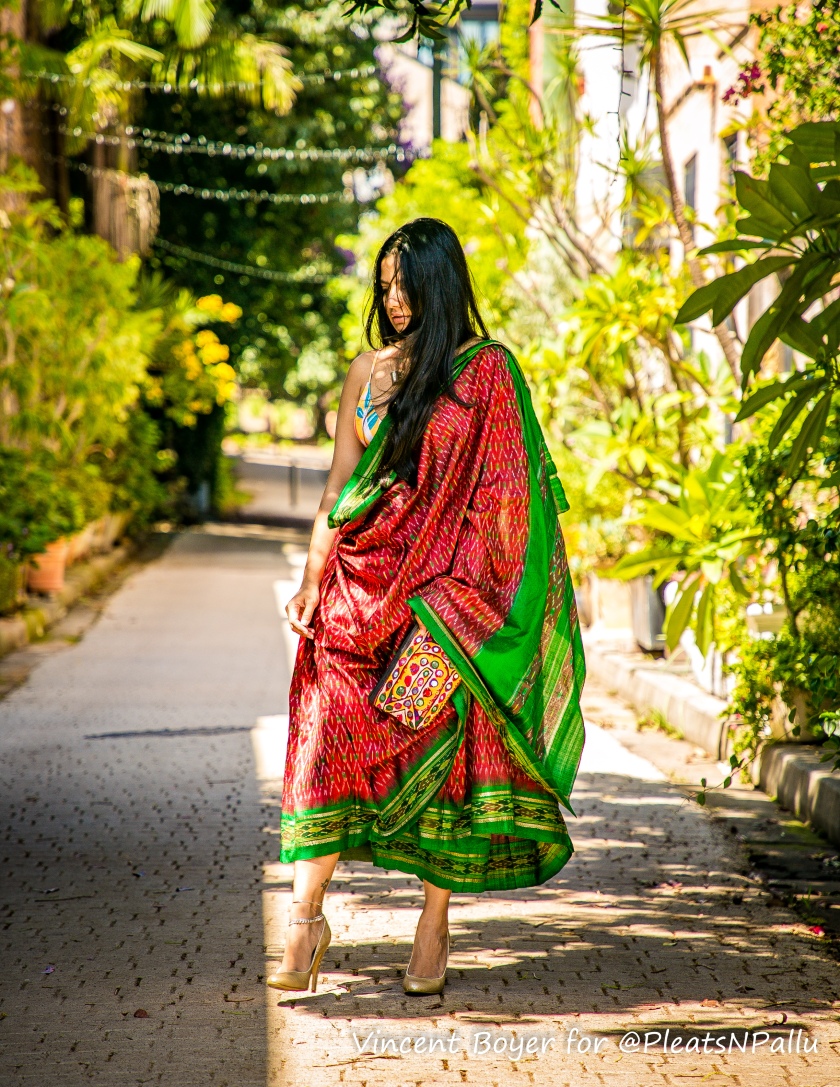
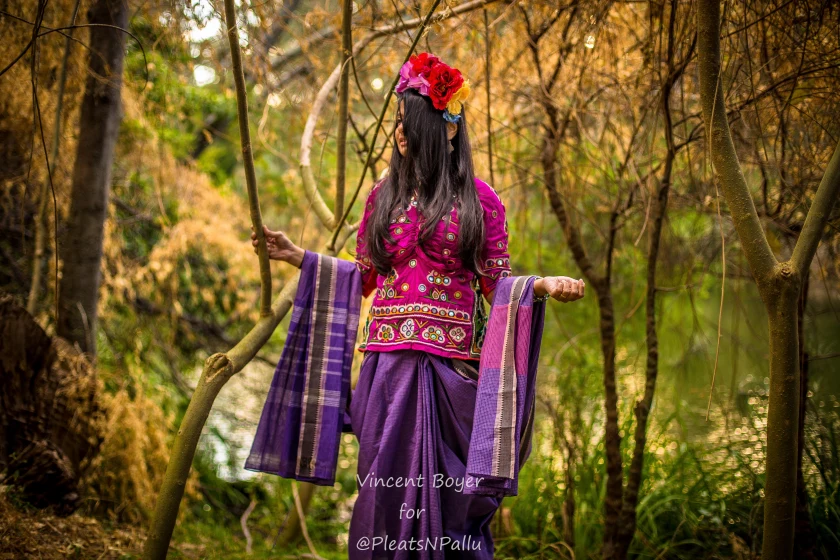
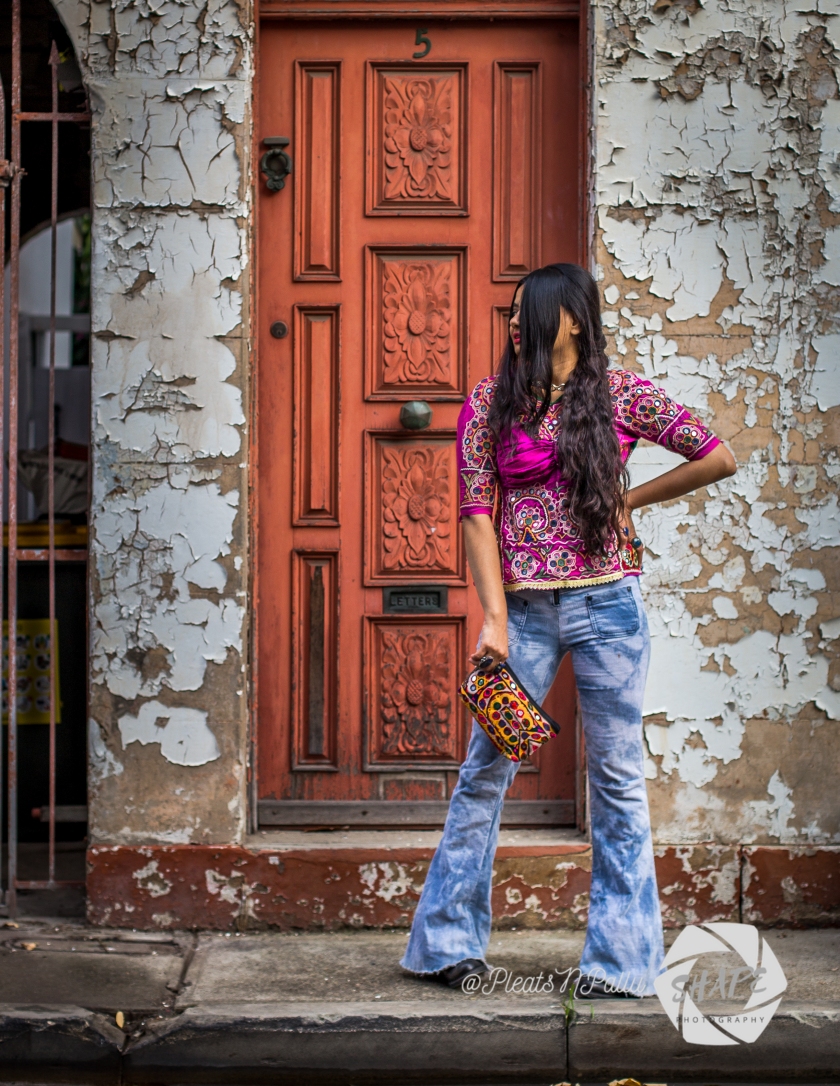
Photos: Vincent Boyer (Say hi on instagram @shape.photos)
This is the third in a series of blog posts discussing the needle work heritage of the Saurashtra and Kutch (also spelt Kachchh) regions in Gujarat, India, where I share a glimpse of embroidered textiles from the area that I have bought over the years as well my own creations.
You can find the first post here and the second here, I recommend that you read them as well. Embroidered pieces based on the dowry traditions of various communities in Gujarat like the Rabaris, Ahirs, Kanbis, Mutwas, Jats, Node have been an intrinsic part of the Indian arts and crafts scene.
Out of the many styles of hand embellishment from that part of the world, the Rabari and Ahir styles of needlework are by far my most favourite, I am endlessly inspired by their design language and traditional motifs. Ahirs are a cattle tending clan whose dowry traditions involve intricately embroidered pieces that just make my eyes bulge and jaw drop.
The women of this pastoral community work for years on their dowry gifts and bags that they painstakingly embroider to signify group identity as well as personal and marital status.
The first photo features an antique choli that is a few sizes too big so I knot it in the front to make it sit like i want to, it is completely embellished in the front and the back, the motifs on the back can be seen more closely in the second photo, the chaniyo (skirt) in the third photo has been hand embroidered by the women of the Boricha Ahir community in Saurashtra worn with a cropped sweatshirt and a clutch worked on by the ladies of the the Praanthadiya Ahir tribe in Kutch. The fourth photo features a vintage Pochampally silk saree worn with a swimsuit top and the same clutch.
The pink vintage choli (backless top) in the fifth photo is an oldie but a goodie, I have worn it countless times for everyday errands as well as for more special soirées. It was embroidered in the Praanthadiya Ahir style by the craftswomen of the Meghwaad Gurjar community in Kutch. The sixth photo also features a similar choli with ribbon ties at the back that almost looks identical till you look closely at the motifs.
I have shared photos of the same choli worn with a pair of denim shorts in Pondicherry it on my older blog here over five years ago.
If you look closely at the main header for my older blog you can see the chaniyo from the second photo, when it was shot over eleven years ago. Also the flared pants have been on regular rotation for a decade now, I have posted it ten years ago here. Just goes to show that if one invests in good quality pieces and hand crafted artisanal textiles, they never really go out of style.
The Ahir community identifies as gopas or herdsmen and are a part of the larger Yadav clan. As per their folk legend they are descendents of Lord Krishna and their ancestors are originally nomads from the north of India. Some Ahirs migrated to the western coast of the subcontinent along with Lord Krishna and different sub-groups settled in Sindh, Kutch and Saurashtra.
The group that settled around the Praanthad area in Kutch are now called Praanthadiya Ahir. Another sub-segment of the community originally planted roots in the Boricha region of Kutch but then moved to Jamnagar in Saurashtra in large numbers.
The various Ahir clans in Kathiawad are Sorathiya Ahirs are named after their adopted homeland, Saurashtra, Pancholi Ahir of Panchal region, Machhoya Ahir who settled by the banks of the river Machhu (of the Macchhu dam burst infamy) in Morbi and Kutchi Ahirs who originally settled around the rann but then moved south.
Women from the Meghwaad Gujjar community are very proficient at this style of needle work, so much so that well to do Ahir families get them to embellish items of significance in their home and for their trousseaus.
The motifs in the Ahir style of embroidery take a lot of inspiration from the flora and fauna around them, most motifs are simply named after their monikers from nature, like: Sachu phool (real flower), jhad (tree), suda (parakeet), mor (peacock); human figures, insects, from domestic activities, maiyari (a lady churning curd), paniari (lady carrying water pot). Depending on the destined usage of the fabric being embellished, Hindu deities like Ganesha and Krishna also feature prominently as the pièce de résistance among the motifs.
An elaborate motif created by mirrors in circular arrangement most commonly featured in this style is known as ‘dhungo’ and is very popular in the Paratharia Ahir sub-style, the top in the first and second photos is a great example. This style of needlework is characterised by the prolific use of simple stitches like chain stitch for outline, mirrors are embroidered using buttonhole or herringbone stiches, bavaliyo (interlacing) is also used elaborately while back stitch (bakhiyo) highlights the motifs and vaanu (herringbone stitch) fills gaps.
The Parathariya Ahir sub-style utilises simple chain stitch while the Boricha and Machoya Ahir sub-style employ open chain stitch to embroider the outline in a design. Traditionally the motifs were drawn free hand using the locally available clay that washes off post the needle-work.
The traditional costume of this community depicts the caste of the Ahir populace, with clothing that is generally brightly coloured, tie-dyed and richly embroidered. Older married women however tend to wear plain black and subdued colours with mashru odhnis with intricately embroidered border.
This style of embroidery is showcased in everyday clothing as well as household paraphernalia and religious objects like torans, dharaniyo, chakla, godhro etcetera.
Everyday objects of a home are decorated with intricate embellishment by the women of this community, elevating these utilitarian products into works of art fit for museums displays.
